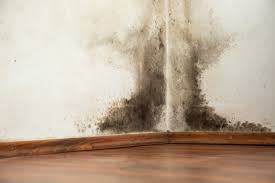The following brief introduction can help property owners and managers of multifamily dwellings understand mold growth and what can be done to reduce its effects on tenants. It will also help prevent property owners from being taken advantage of by unethical practices.
Mold is a common fungus all round us. It can grow quickly in warm, moist environments. In any residence, steps can be taken to control mold and dampness, significantly reducing the amount of mold growing in the environment.
There are four kinds of health problems that come from exposure to mold: allergic illness, irritant effects, infection, and toxic effects. For people that are sensitive to molds, symptoms such as nasal and sinus irritation or congestion, dry hacking cough, wheezing, skin rashes or burning, watery or reddened eyes may occur. People with severe allergies to molds may have more serious reactions, such as hay-fever-like symptoms or shortness of breath. People with chronic illnesses or people with immune system problems may be more likely to get infections from certain molds, viruses and bacteria. Molds can also trigger asthma attacks in persons with asthma. Headaches, memory problems, mood swings, nosebleeds and body aches and pains are sometimes reported in mold complaints, but the causes of these physical symptoms are not yet understood. The toxic effects of certain molds are not well understood, and are currently a controversial topic in the medical and scientific community. There is evidence of specific long-term toxic effects from eating foods with mold toxins. Unfortunately, very little is known regarding the actual health risks from breathing in or skin contact with mold toxins. Allergic disease is now considered the most likely health problem related to mold exposures. Research into the possible health effects related to mold exposure continues today.
If there’s mold growing inside a unit there’s a moisture problem that needs correction. Mold has to have moisture and an organic substance (Like Drywall) to grow. Another cause of mold growth that is often overlooked, can be a heavily soiled evaporator coil. Your AC evaporator coil can create the perfect conditions for mold growth. The debris on the coil is the organic substance and moisture on the coils will help promote mold growth.
Mold remediation is a big business. There’s a saying in the industry “Mold is Gold” and while mold remediation is often needed, if the underlying cause that allowed the mold to grow, isn’t corrected then the mold will simply grow back. The only states that mold remediation is regulated are Florida, Mississippi, Tennessee, Texas, Maryland and Louisiana. Other states have no regulations. Even in regulated states, there are some companies in business, that are more concerned with making profits, than their client’s best interests.
If you’re getting water intrusion from a plumbing leak, water intruding through the building envelope, roof leak, poor ventilation etc. and you don’t correct the problem- then spending thousands of dollars on mold remediation will be money wasted. The underlying problem that allowed the mold to grow has to be corrected. Another common cause for mold growth is poor ventilation. If the bathroom doesn’t have a window, it must have a working exhaust fan to remove moisture. Vinyl wallpaper in high humidity rooms like bathrooms can be problematic and should be removed Determining and correcting what caused the mold growth is critical to preventing it from reoccurring. .
In many states mold remediation is poorly regulated, or not regulated at all. Also some remediation companies recommend more testing than needed to create revenue. I once attended a mold training class put on by a very popular mold testing lab. During the training, they suggested, swab testing each location with visible mold growth. For example, if there’s 20 different spots with mold, they recommend doing a swab test on each spot. At $100 a swab that’s $2,000 to tell you what kind of mold each spot is. If you see mold, you have a mold and testing is not usually needed. What kind of mold, isn’t as important as correcting the causative condition and removing the affected materials. If you hire a company that is interested in doing numerous air samples and wants to start remediation without having the conditions that caused the mold growth corrected first, you should find another company.
Air sampling is performed by getting an outdoor baseline sample and indoor air samples. The spores are counted and compared. One indoor air sample is good for 500 – 600 square feet. Depending on square feet, these samples can quickly add up. And that brings us to the question…if you see visible mold growth, do you really need a bunch of air samples to tell you that you have mold? This is from the Florida Department of Health website There are no health or exposure-based standards that you can use to evaluate a mold sampling result.
The Florida Department of Health does not recommend mold testing or sampling to see if you have a mold problem, or to see what kind of mold might be growing. Sampling for mold in the air can be expensive and, if done, should only be done by experienced professionals. Investigate a mold problem; don’t test.
In many cases, your property maintenance staff can remove the affected material. If there has been a lot of water damage, and/or mold growth covers more than 10 square feet, consult the U.S. Environmental Protection Agency (EPA) guideline: “Mold Remediation in Schools and Commercial Buildings. Although written about schools and commercial buildings, this document also helps when dealing with mold in other building types.
If you hire a mold remediation company, doing your homework is highly recommended. Check references and find out how long they have been in business. Doing your due diligence on the mold remediation company you hire is very important.
Happy Investing


Recent Comments